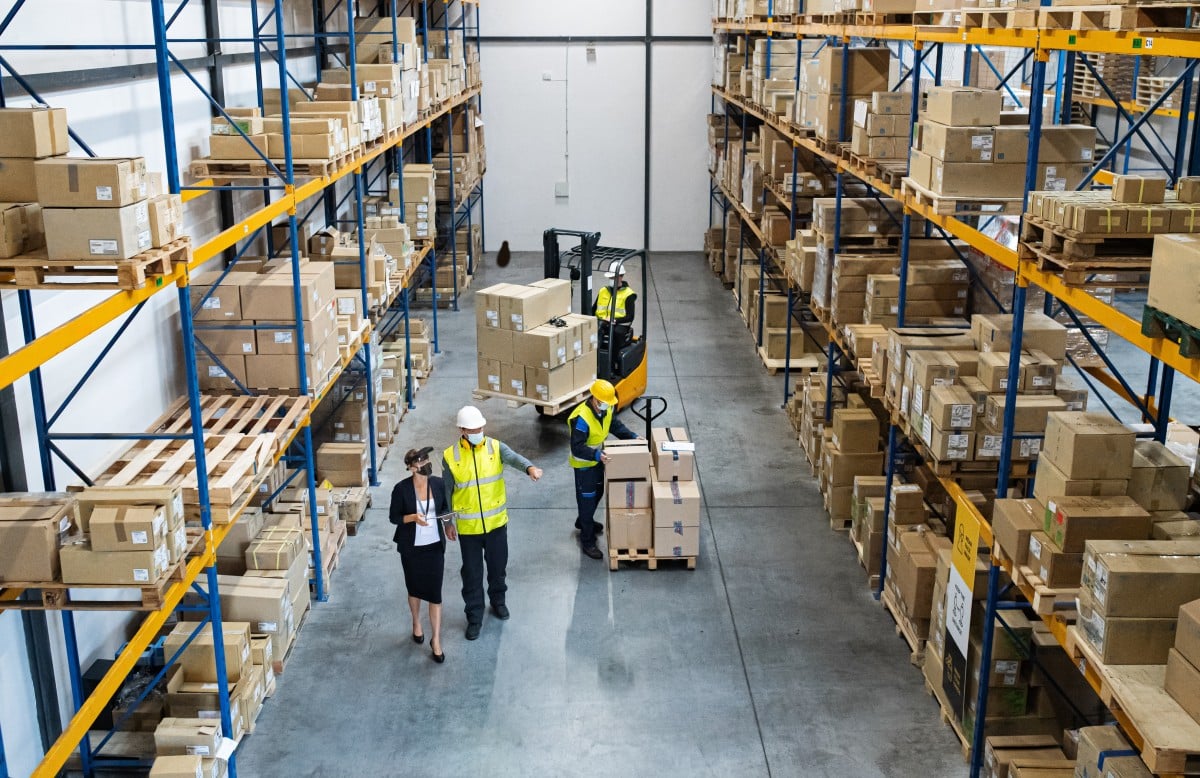Maintaining a well-organized and productive warehouse can be a complicated task. Even though some may first believe that these structures are just for keeping goods before their exporting or dispersion for sale, a well-functioning warehouse system is much more complex than that. To manage products and cargo efficiently and make them readily accessible whenever required for shipping, warehousing is a procedure that uses scientific techniques. Maintaining a well-organized warehouse is an essential part of business operations in today’s consumer market.

Invest in Training
Apart from increasing safety in a possibly lethal work environment, having a properly educated staff increases efficiency and simplifies your job as a manager. Training your employees as soon as possible is essential so that the warehouse’s operations run smoothly and properly. While most workers can stock shelves, not every employer can adhere to proper procedures. Correct inappropriate conduct as quickly as possible to prevent incorrect handling from becoming the standard on the floor.
Make Sure Your Warehouse Is Secure
Heavier equipment, big goods, slick flooring, and quick import and export periods are standard features of warehouse operations. Remember that your employees’ safety should always be your first concern. It is essential to have comprehensive safety training in place, and after completing the training, each new staff member should be evaluated on their understanding of safety procedures.
Since warehouses are frequently utilized to store many costly goods, they are a common target for burglars. Tight round-the-clock security should be implemented in a well-equipped warehouse to reduce theft. If you have a warehouse, consider adding security cameras to monitor all facility parts inside and outside the building. Product safety must be given the utmost attention.
Make Sure You Have Essential Warehouse Equipment
Your warehouse will need barrier rails regardless of their size or configuration. They are used to safeguard equipment and buildings against forklift damage. Barrier rails can also restrict employee access to high-traffic forklift locations, decreasing the risk of accidents. Some barrier rails include a lift-out rail for ease of removal. When required, the lift-out rail allows workers to access necessary equipment and machinery without removing them. Handrails are also needed for fall protection in high locations such as mezzanines and overhanging walkways.
OSHA mandates that any area with a fall of four feet or even more be covered. The most frequent option is a mix of hand and barrier rails. Bollards are a must. Bollards, also known as posts, serve as a visual caution to forklift drivers. Bollards can be used in the same way as barrier rails to protect machinery and equipment. Fixed pour-in-place bollards and detachable bollards are offered. Sizes may also be tailored to meet particular requirements. Looking for lighting assistance, such as strobe lights for your pickers, would be best.
Invest in Technology
A warehouse management system (WMS) or an ERP system with a powerful WMS module may increase efficiency by recommending the most efficient routes and techniques for selecting and putting away. The system also offers automatic select lists that can be delivered to mobile readers and devices, which helps prevent errors and save time and paper by reducing paper and printing waste. Cleanliness and environmental friendliness will prevail in your warehouse. Transaction accuracy may be improved by using barcode or radio frequency identification (RFID) readers and reducing picking mistakes. The University of Arkansas discovered that utilizing RFID improved inventory accuracy by 27 percent in only 13 weeks after using the technology.
Organize
Organization is essential to your operation if you want your incoming goods to be delivered to the correct places and your pickers to locate that stuff on time. Formalize an organization system that arranges your components in a sequence that makes good sense for your manufacturing process. Do not just arrange for organizing. A store’s most popular goods should be displayed prominently, while products often purchased together should be in the same aisle.
A shipment-tracking software is critical for the productivity of your warehouse and the pleasure of your customers, so make sure you use one. You will always want to know where your goods are, and your consumers will want to know the same thing. Giving them real-time statistics can only serve to enhance the level of customer service you deliver.
Although warehouses vary in terms of the goods they keep and their procedures, all warehouses can benefit from following these guidelines to increase productivity while increasing safety and customer satisfaction. Remember to refine your processes via trial and error and review and restructure your procedures as frequently as necessary.
Sound judgment and appropriate storage equipment are just as important as sophisticated picking algorithms in increasing warehouse productivity. Follow these easy procedures, and you’ll see an increase in your productivity.




